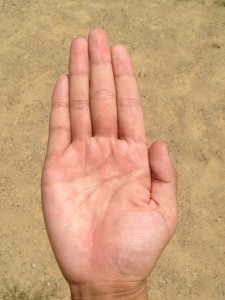How many people suffering, on drugs, facing a life of limitation could be helped by chiropractic care? Probably most of them. The following are 3 case studies of people just you who were helped by chiropractic care. Do you know someone who might benefit from our care? Please share this with them.
Pain, weakness, numbness and tingling in the arm
Two months before starting chiropractic care a woman began experiencing radicular symptoms in the form of pain, weakness, numbness and tingling in all the fingers in her right hand.
Prior to seeing the chiropractor, the patient saw a medical doctor who took X-rays as well as prescribed anti-inflammatory medication and a steroid injection. In addition, a physical therapist was seen three times per week for finger rehabilitation. Her condition did not change. An MRI revealed multilevel disc protrusions in her neck, spondylosis and spinal stenosis. It was recommended that she have a surgical evaluation. She refused.
After 26 visits, over a period of 100-days, improvements were observed on both X-ray and MRI along with a reduction in all her symptoms. (1)
Inability to nurse twins
Two weeks after the birth of twin girls the new mother was seen for care. She complained of an inability to initiate a let-down reflex and was not producing enough milk. She also complained of neck, shoulder pain and vasospasms (an arterial spasm restricting blood flow) in her breast.
Chiropractic examination revealed subluxations in her upper thoracic (mid back) region and cranial restrictions.
Adjustments were delivered to the thoracic area (T3-T5). The mother immediately felt more sensation in her breast, specifically the nipple and areola. She also reported the ability to relax her shoulders and achieve deeper inhalation during nursing. She produced double the amount of breastmilk as she had previously. She was feeling emotionally more stable and even optimistic about maintaining her nursing schedule with the twins. An updated exam at ten months postpartum showed that she was still successfully nursing both twins. (2)
Cauda equina syndrome in a 7-year-old dachshund.
All animals with a spine can develop vertebral subluxations. Like their humans, dogs have subluxations too. In this case a 7-year-old dachshund was experiencing a decrease in appetite, defecation issues, decreased reflexes in his hind legs and could not do a full body shake. Similar symptoms occur in humans with herniated discs and it’s called “cauda equine syndrome.” X-rays confirmed that this dog had an L1/L2 (upper lumbar) disc herniation.
The owner described the dog as always being “a very active dog and still is. He would jump everywhere….” One day the dog started whining and would not jump onto the couch, but rather would lay on the floor and did not eat much. The dachshund had two chiropractic adjustments and all the symptoms were alleviated: hind leg reflexes returned, as did his appetite, and (to the relief of the owner) bladder and bowel control.
After the second visit the owner of the patient reported the dog was “totally back to normal;” he was able to do a full body doggy shake. (3)
Do you know anyone with the above issues?
Please refer them to us. We can help! 517.627.4547
- Cunico C, Badiou M. Improvement in symptoms and spinal alignment following the pierce results system in a patient with cervical radiculopathy & intervertebral disc derangement: a case study & review of the literature. Annals of Vertebral Subluxation Research. February 12, 2020:11-25.
- Baum A. Resolution of milk ejection reflex dysfunction & increased breastmilk supply following chiropractic adjustment in a nursing mother of twins: a case report & review of the literature. Journal of Pediatric, Maternal & Family Health, Chiropractic. March 10, 2020:7-11.
- Stone-McCoy P, Friedrich S. Resolution of cauda equina syndrome following chiropractic care in a 7-year-old dachshund with lumbar disc herniation: a case study & review of the literature. Annals of Vertebral Subluxation Research. February 27, 2020:26-32.
